Bearish Flag Pattern
Learn to identify and trade the bearish flag pattern: a key tool for spotting and capitalizing on downtrends in financial markets.
The bearish flag pattern is a well-known chart formation in technical analysis that predicts a potential drop in asset prices. This article explores how to recognize the pattern, its main characteristics, and effective trading strategies for when the market signals a bearish trend.
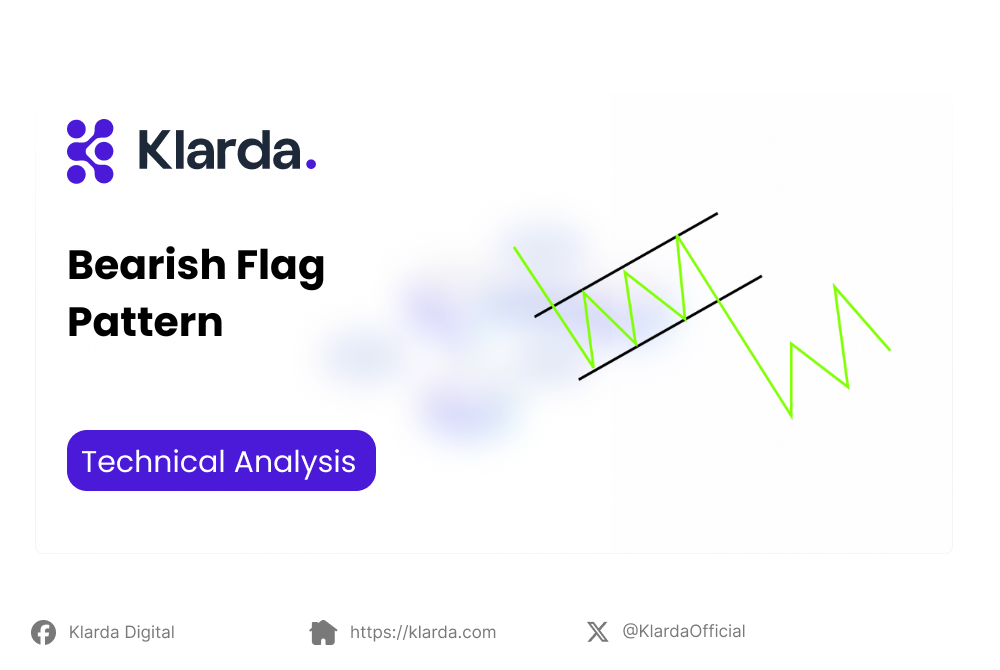
KEY TAKEAWAYS
- The bearish flag pattern consists of a sharp decline followed by a consolidation period, forming a flag-like shape on the chart.
- The pattern is marked by a steep initial drop (the flagpole) and a consolidation phase (the flag) that trends upward or sideways before a continuation of the downtrend.
- For trading strategy: Enter a trade when the price breaks below the flag’s lower boundary, signaling a continuation of the bearish trend.
WHAT IS A BEARISH FLAG PATTERN?
What is the bearish flag pattern?
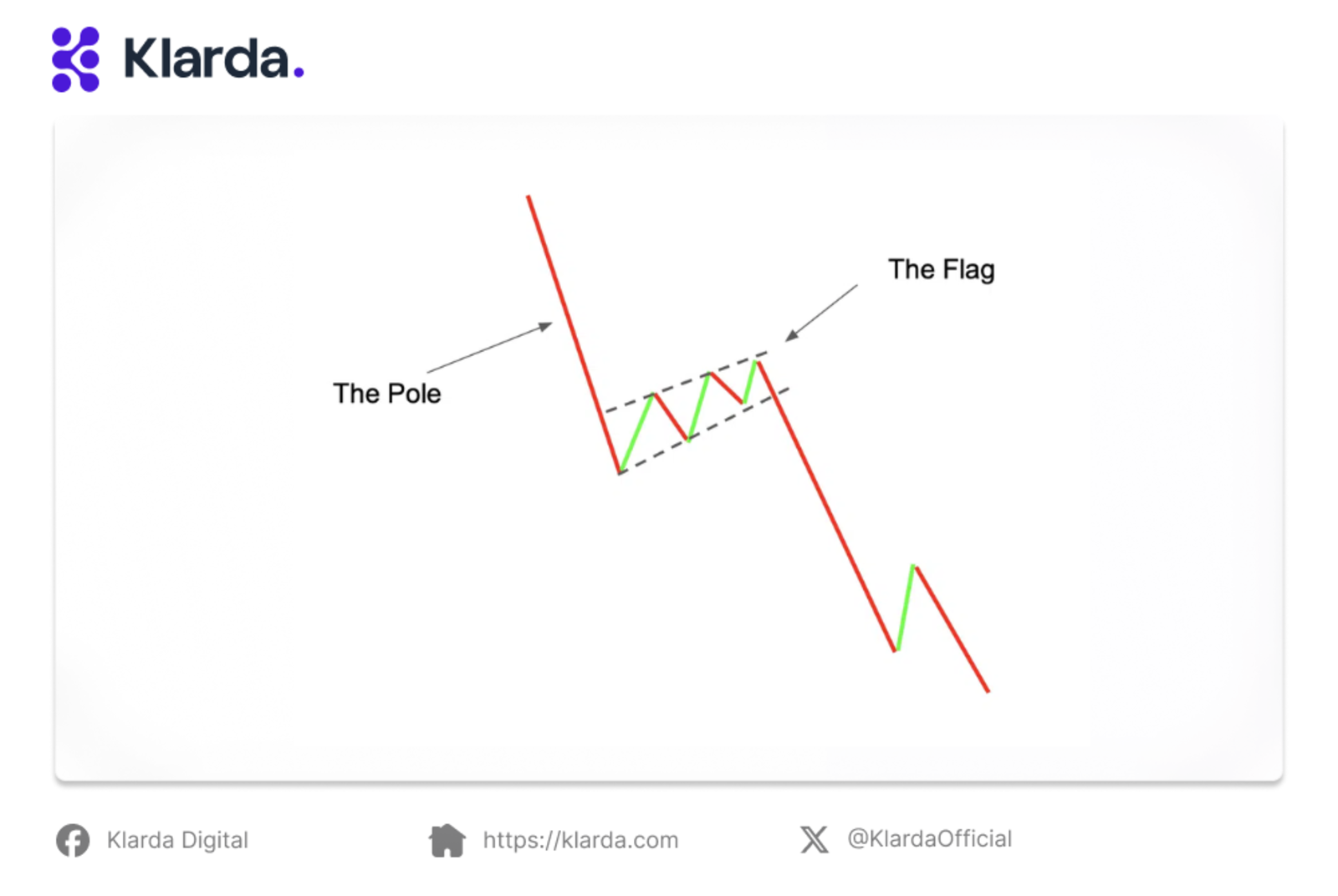
What is the bearish flag pattern?
The bear flag pattern indicates that after a corrective bounce, the price is expected to continue declining. It typically appears during a major downtrend and has two phases: a sharp drop and a consolidation.
Initially, there is a significant decline due to strong selling pressure, showing that sellers are in control. Following this, prices consolidate and may slightly rise, reflecting trader indecision. This rally is usually brief as the downtrend resumes.
The pattern is confirmed when the price breaks below the consolidation’s lower boundary, often supported by increased trading volume, signaling that the bearish trend will likely continue.
Read more: Bearish Candlestick Patterns
HOW TO IDENTIFY A BEAR FLAG PATTERN?
The bear flag pattern consists of a sharp price decline (the flagpole) followed by a consolidation phase (the flag). Here’s how to identify and trade this pattern:
Sharp sell-off: Look for a significant price drop with high volume, signalling strong selling pressure. Volume typically decreases during consolidation, indicating weakened upward momentum. An increase in volume at pattern completion confirms a bearish sentiment.
Consolidation phase: After the drop, the price consolidates with lower volume and a tighter range.
Breakout signal: Watch for a downside breakout from consolidation, confirmed by a move below support or a bearish candlestick pattern.
WHEN TO TRADE THE BEAR FLAG PATTERN
The bear flag pattern forms during a sharp downtrend, often triggered by sudden news or sentiment shifts that cause sell-offs. In a 'risk-off' environment, signals a worsening downtrend as economic uncertainties lead to sharp price drops.
From an Elliott Wave perspective, the bear flag resembles a declining zigzag, appearing as part of a Wave 2 correction or Wave A in an Elliott wave triangle.
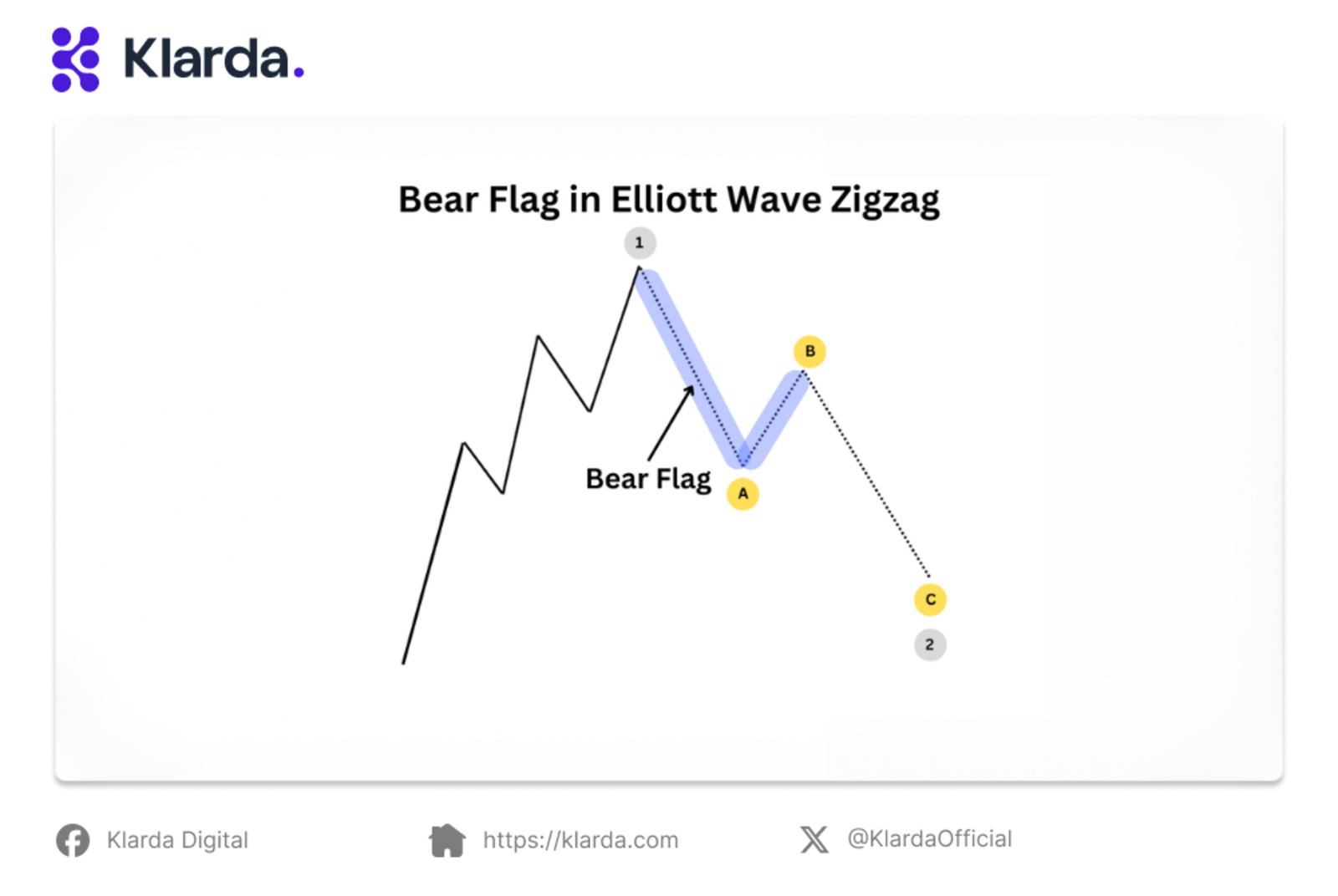
Bear flag in Elliott wave zigzag
For example, after a strong Wave 1 rally, the pattern represents waves A and B of an A-B-C zigzag, with the breakdown aligning with wave C and the larger Wave 2 correction.
BEARISH FLAG STRATEGIES
Several bear flag trading strategies have been commonly practiced. Below, we'll look at two strategies that are easier to implement.
Breakout Below Flag Support
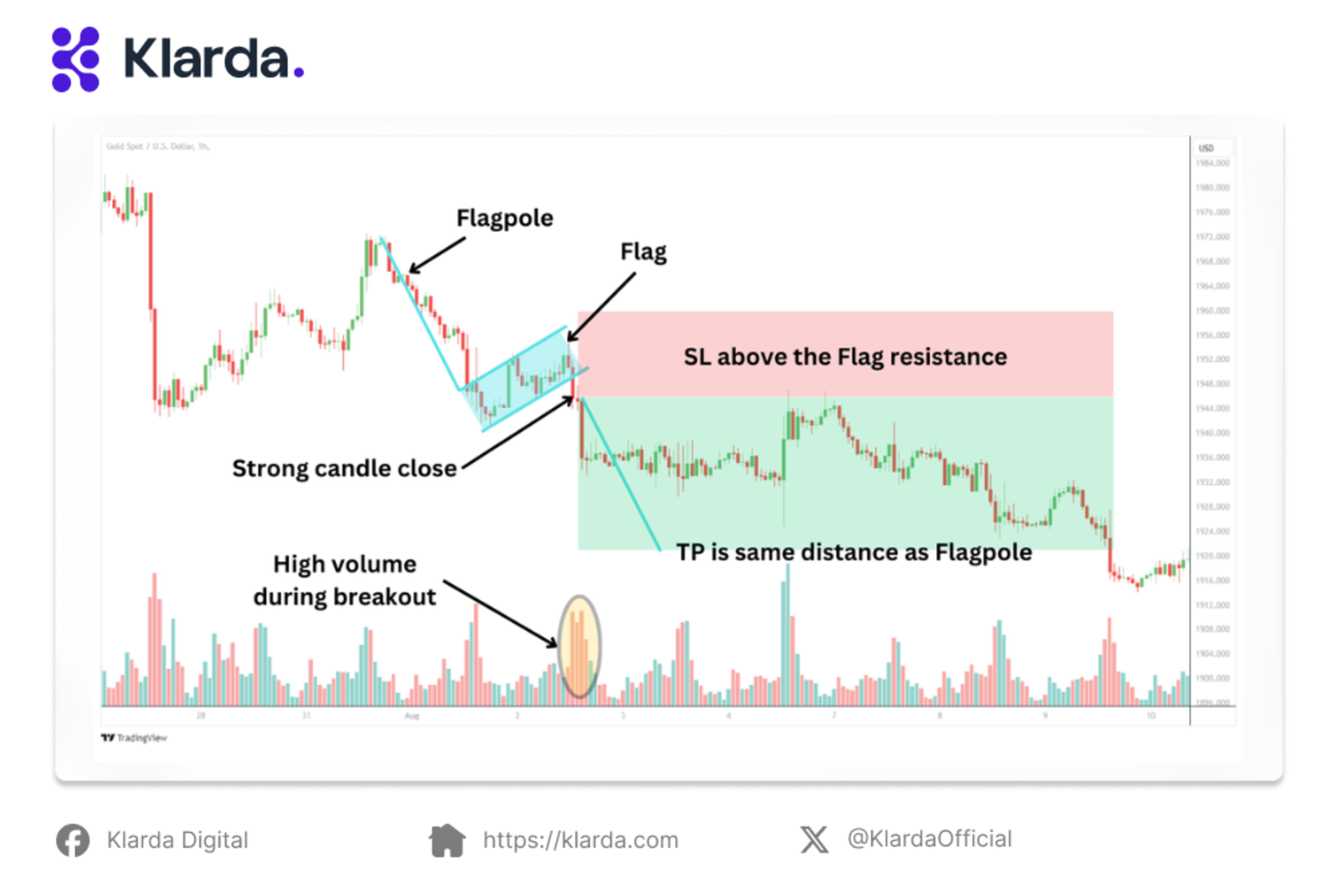
Breakout Below Flag Support Strategy
On a 1-hour gold chart, wait for the price to break below the flag’s upward-sloping support trendline, ideally with increased volume. Set a stop-loss just above the flag’s resistance. The take-profit level is the flagpole's length extended downward from the breakout point, aiming for a 1:2 risk-reward ratio.
Retest of Broken Support
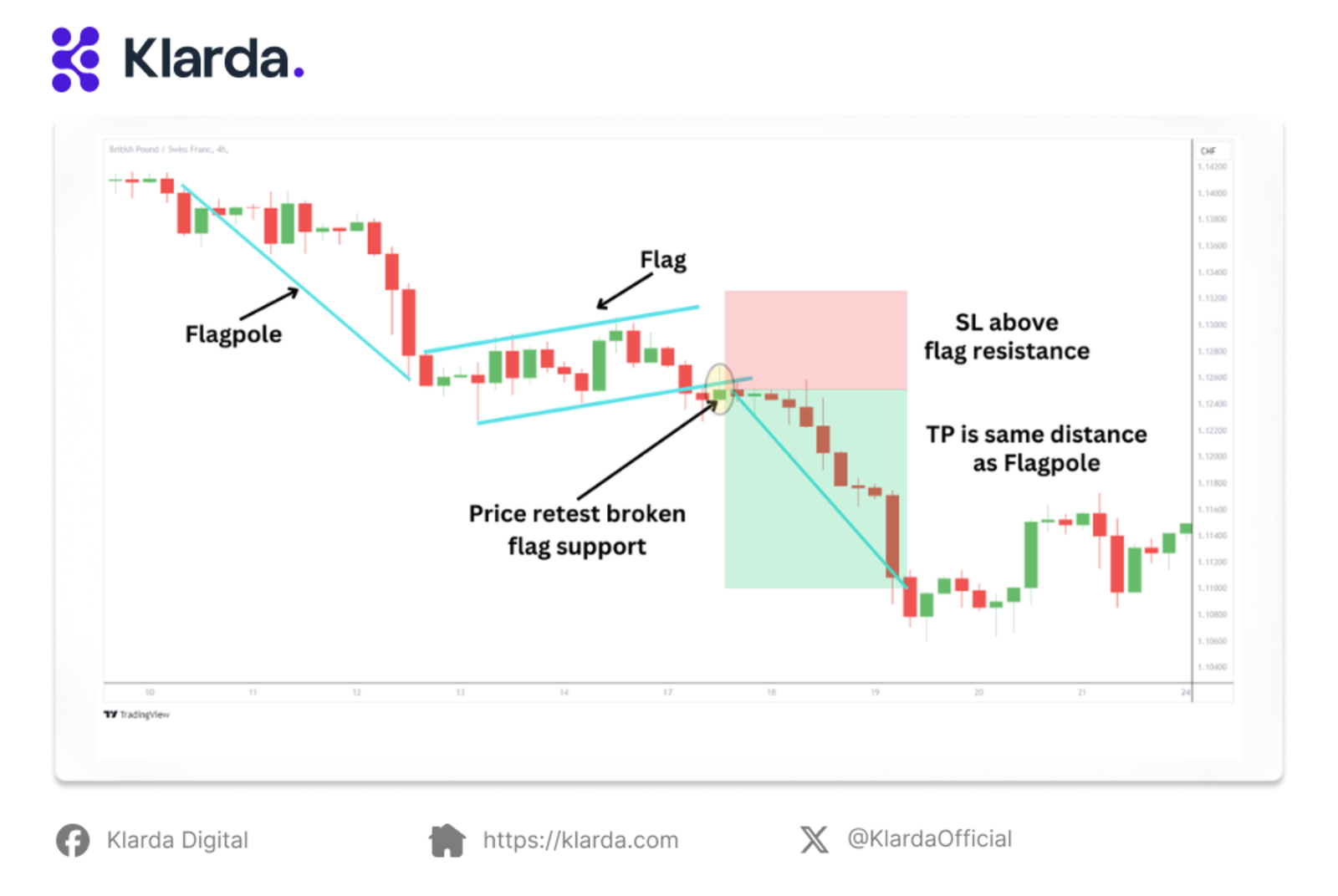
Retest of Broken Support Strategy
After the price breaks below the support trendline, wait for a retest of this level as resistance. Enter a trade upon bearish rejection at this resistance. Place a stop-loss above the flag resistance and set the take-profit target by extending the flagpole’s height from the retest point, using a 1:2 risk-reward ratio.
Bearish flag vs bullish flag

Bearish flag vs bullish flag
Understanding the difference between bull and bear flags is crucial for traders analyzing market trends. Both patterns signal continuation but in opposite directions.
Bear Flag: Forms in a downtrend, starting with a sharp decline (flagpole) followed by upward or sideways consolidation (flag). Volume drops during consolidation and spikes when the price breaks lower, signaling to enter short positions.
Bull Flag: Occurs in an uptrend, beginning with a strong price rise (flagpole) followed by downward or sideways consolidation (flag). Volume decreases during consolidation and increases when the price breaks higher, signaling to enter of a long position
ADVANTAGES AND DISADVANTAGES OF THE BEARISH FLAG PATTERN
Pros:
- A bear flag pattern effectively predicts the continuation of a bearish trend.
- It is valuable for executing profitable short trades.
Cons:
- Like all indicators, the bear flag pattern can sometimes be unreliable.
- Risk-averse investors may find fewer opportunities for significant gains with this pattern.
Read more: Technical Indicator
FINAL THOUGHTS
The bear flag pattern is a popular tool for predicting a continued downtrend. It's useful, but should be combined with other analysis methods.
In the cryptocurrency market, prices can be highly volatile and unpredictable. It's crucial for traders to stay informed about market conditions and avoid letting the fear of missing out influence their decisions. Always take the broader market context into account to make well-informed trading choices by following up with Klarda now!
Read more: Explore more about Klarda
Updated 7 months ago